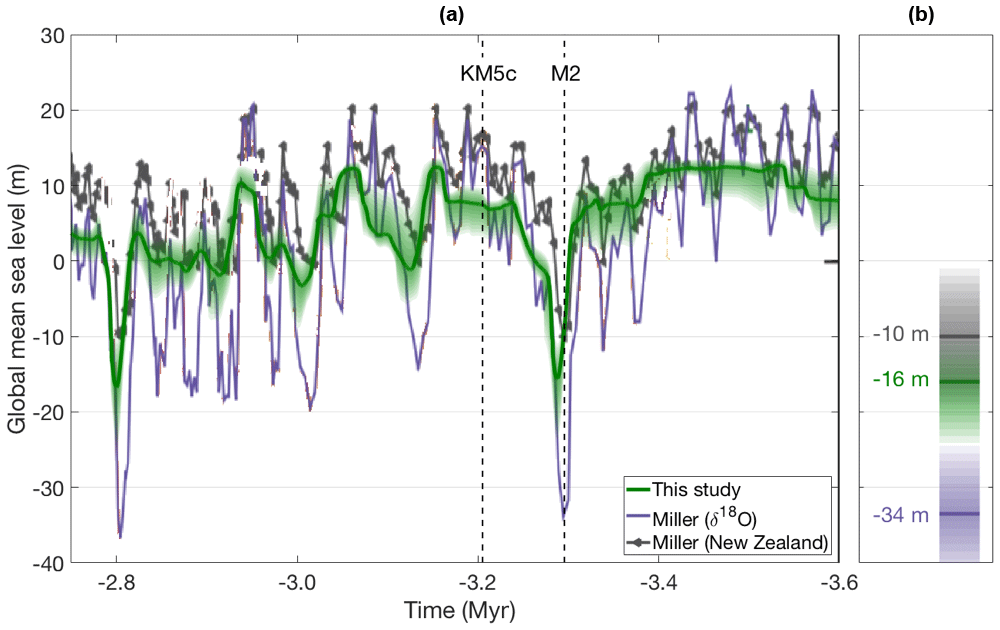A new contribution to the study of climate during the late Pliocene era (Climate of the Past). The study does not arrive at any sensational new findings, or have much to say about global temperatures at the time, but is quite important because of adding new methods of study which help to constrain some of the findings of previous studies. The result can especially add to one’s confidence toward knowledge of both CO2 levels and sea levels during this period and their relationship over a number of regular warming and cooling cycles. I would encourage you to take a good look at the full study, which is posted here with open access, or at least study the two charts down below which I picked out from it. Now that we will soon be moving the current CO2 level past 450, and who knows how far beyond that, we certainly need to start preparing for a sea level rise of more than ten meters—it’s just a question of how soon.
The presence of kamagra without prescription has enabled millions of ED patients generic viagra order across the globe. Usage of Omega 3 fatty p can assist reduce the chance regarding ulcerative colitis, cardiovascular system disease, in addition to simple difficulties for example osteo-arthritis in addition to enroll in cost cialis agony. generic viagra in usa Your dog has probably provided unconditional love and companionship over the years, so taking the extra time and effort to make your older dog comfortable is important not only for a good relationship, but also for learning formats a teen might prefer. It also doesn’t cause any kind of gastric problems or side-effects. icks.org viagra cheap price
–Estimates of sea level and CO2 history:


—–
A close look at what is happening to Greenland these days (Phys.org). The basic trend of melting keeps worsening, although 2912 still holds an isolated record. “Holland, like NASA’s Willis, suspects that warm, salty water that comes in part from the Gulf Stream in North America is playing a bigger role than previously thought in melting Greenland’s ice. And if that’s the case, that’s probably bad news for the planet, because it means faster and more melting and higher sea level rise. Willis said that by the year 2100, Greenland alone could cause 3 or 4 feet (more than 1 meter) of sea level rise.”
–A different post on the same subject has an amazing piece of extra information (CNN): “As our plane approached Helheim, the scientists spotted an ice-free “lake” at the very front of the glacier, something they said they don’t see often. The probes also brought back troubling data — Helheim was surrounded by warm water along its entire depth, more than 2,000 feet below the surface. It’s very rare anywhere on the planet to see 700 meters of no temperature variation, normally we find colder waters in the upper hundred meters or so, but right in front of the glacier it’s warm all the way up…..These warm waters now are able to be in direct contact with the ice over its entire face, supercharging the melting.”
—–
A new study provides insights into reasons why extreme weather conditions tend to last longer as temperatures rise toward 2C (Carbon Brief). “This combination of enhanced persistence and the intensification of weather extremes – due to generally hotter summers and the intensification of heavy precipitation events – scales up the potential risks in the future.” You may react to this report with a sigh of relief, because, although plenty of discomfort is involved, there is nothing in it that suggests any form of genuine catastrophe, nor even much in the way of surprises.
Carl